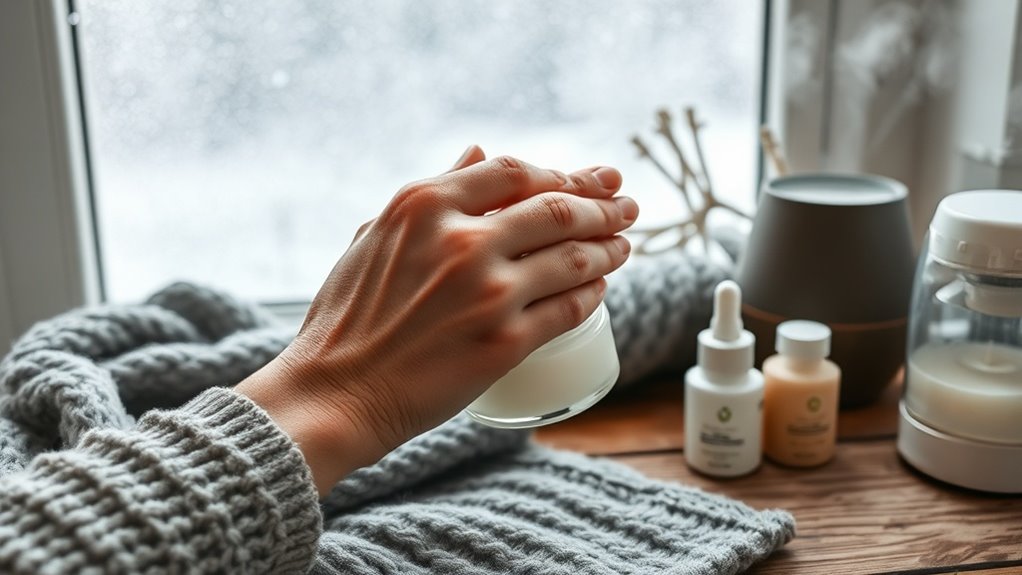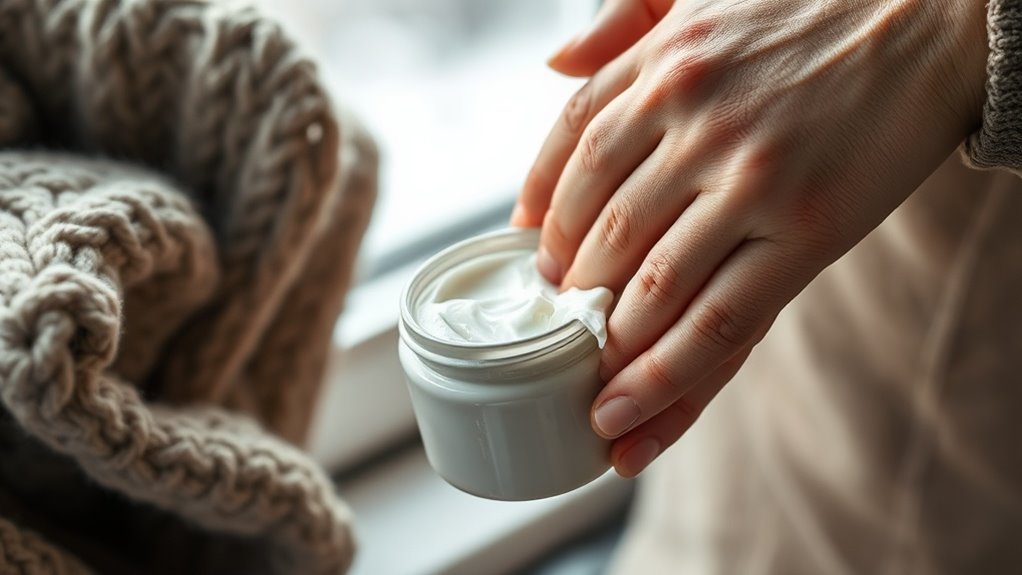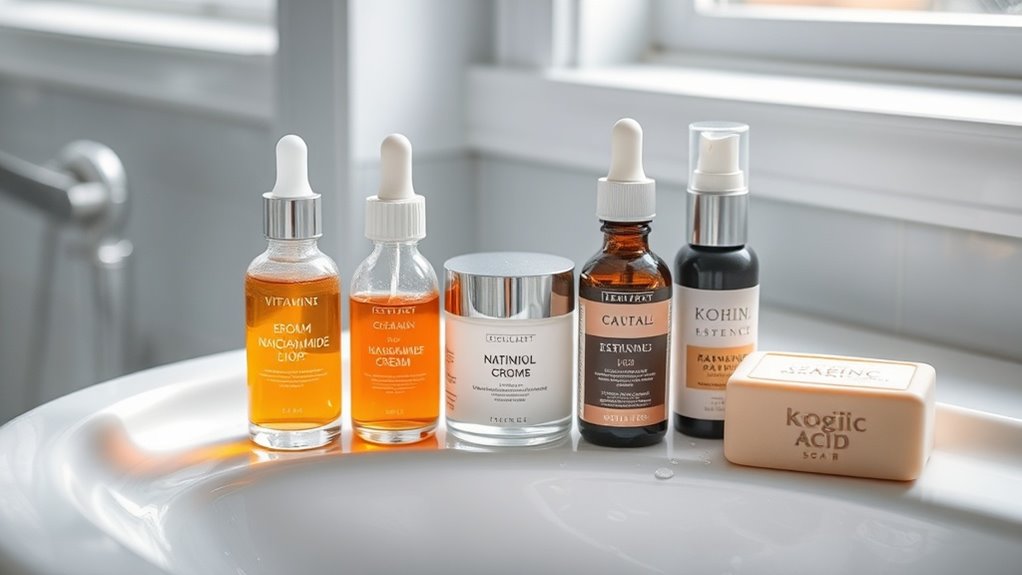Pimple Remedies Overnight That Really Work
You can effectively treat overnight breakouts using proven methods that target acne-causing bacteria and inflammation while you sleep. Tea tree oil diluted to 5% concentration provides antimicrobial benefits, while over-the-counter options like 2.5% benzoyl peroxide or hydrocolloid patches offer rapid improvement. Natural alternatives include raw honey masks and green tea compresses. For optimal results, combine these treatments with proper cleansing and a non-comedogenic moisturizer. The following evidence-based solutions will help you achieve clearer skin by morning.
Understanding What Causes Overnight Breakouts
Overnight acne breakouts occur when excess sebum, dead skin cells, and bacteria become trapped within pores during sleep.
While you’re resting, several factors can trigger these eruptions, including hormonal fluctuations that peak during nighttime hours, unwashed pillowcases harboring bacteria, and touching your face while sleeping.
Your skin’s natural repair process, which intensifies at night, can sometimes lead to increased oil production and clogged pores.
Understanding these triggers is crucial when seeking effective pimple remedies overnight, as targeting the specific cause determines the most appropriate treatment approach.
Essential Tea Tree Oil Spot Treatment
Tea tree oil’s potent antimicrobial properties make it a scientifically-validated spot treatment for acute acne lesions.
You’ll need to dilute the oil to a 5% concentration with a carrier oil like jojoba to prevent skin irritation. Apply the mixture directly to your blemish using a clean cotton swab.
The oil’s terpinen-4-ol compound effectively kills P. acnes bacteria while reducing inflammation.
You’ll typically notice reduced redness within 4-8 hours. For optimal results, apply the treatment twice daily after cleansing.
If you experience any burning or irritation, discontinue use and consult a dermatologist.
DIY Natural Remedies From Your Kitchen
Raw honey’s antimicrobial properties target P. acnes bacteria while its osmotic effect draws out excess fluid. Apply green tea compresses to benefit from catechins’ anti-inflammatory action. Fresh lemon juice’s citric acid provides gentle exfoliation and pH balance, while raw apple cider vinegar’s alpha-hydroxy acids help unclog pores. Combine one tablespoon of baking soda with water to create an alkaline paste that neutralizes acid-loving bacteria and absorbs excess oil. Additionally, tea tree oil’s terpenes effectively eliminate P. acnes bacteria, enhancing the acne-fighting potential of your remedies.
Over-the-Counter Solutions for Quick Results
Several widely available over-the-counter (OTC) topical medications can significantly reduce pimple inflammation and redness within 24 hours.
You’ll find benzoyl peroxide products most effective at 2.5% to 5% strength, as they kill acne-causing bacteria and remove excess oil.
Salicylic acid treatments at 0.5% to 2% concentration work by exfoliating dead skin cells and unclogging pores.
Hydrocolloid patches absorb fluid while protecting the affected area from further contamination.
For optimal results, apply a thin layer of your chosen treatment to clean, dry skin. Spot treatments containing sulfur or niacinamide can also deliver rapid improvement when used as directed. Additionally, natural remedies like tea tree oil can be a powerful adjunct to these OTC treatments, enhancing their effectiveness against acne.
Best Overnight Patches and Stickers
Hydrocolloid acne patches have revolutionized overnight pimple treatment by creating an optimal healing environment while you sleep.
These patches contain moisture-absorbing compounds that extract pus, oil, and debris from inflamed lesions while preventing further bacterial contamination.
You’ll find two primary types: medicated patches containing salicylic acid, tea tree oil, or niacinamide, and non-medicated hydrocolloid-only versions.
The medicated varieties actively target inflammation, while plain hydrocolloid patches focus on fluid absorption and barrier protection.
For best results, apply the patch to clean, dry skin and leave it on for 6-8 hours.
They’re particularly effective on whiteheads and surface-level pustules.
Proper Skincare Routine Before Bed
Establishing a systematic pre-bedtime skincare routine is crucial for maximizing overnight acne treatment efficacy.
You’ll need to double cleanse – first with an oil-based cleanser to remove makeup and sunscreen, followed by a gentle water-based cleanser.
Apply alcohol-free toner to restore skin pH balance.
If you’re using active ingredients like retinoids or benzoyl peroxide, apply them to clean skin and wait 20 minutes for absorption.
Follow with a non-comedogenic moisturizer to prevent transepidermal water loss.
Your skin’s repair mechanisms peak during sleep, so proper preparation ensures optimal absorption of treatment products. Incorporating baking soda’s properties can be beneficial, as it helps maintain balanced pH levels while targeting excess oil.
When to Seek Professional Treatment
While home remedies and proper skincare routines can effectively manage mild acne, persistent or severe breakouts require professional medical intervention.
You should consult a dermatologist if you’re experiencing cystic acne, nodules, or inflammation that doesn’t respond to over-the-counter treatments within 4-6 weeks.
Other warning signs include scarring, post-inflammatory hyperpigmentation, or acne affecting your mental health. Additionally, seek immediate medical attention if you develop skin infections, fever, or severe pain accompanying your breakouts.
A dermatologist can prescribe stronger medications like oral antibiotics, isotretinoin, or hormone therapy, and perform specialized treatments such as chemical peels or laser therapy. Natural solutions for sudden breakouts can be beneficial as a first step, but professional care is essential for long-term management.




